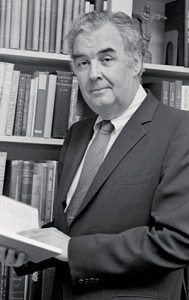Claims in a lawsuit filed against cult specialist and court expert Rick Alan Ross and others were dismissed last month. United States Federal Judge Katharine S. Hayden ordered, “NXIVM’s claims against…Ross, the Ross Institute [now known as Cult Education Institute], [Dr. Paul] Martin, and Wellspring Retreat…dismissed in full.”
The legal action was filed against Ross by a relatively obscure self-help guru named Keith Raniere of Albany, New York who runs a group called NXIVM (pronounced nexium). Media coverage regarding Raniere has often focused on his wealthy followers, particularly Clare and Sara Bronfman, two heirs to the Seagram’s Liquor fortune of billionaire Edgar Bronfman Sr. The Bronfmans have apparently backed many of Raniere’s schemes and lawsuits.
Raniere, whose followers call him “Vanguard,” sought to silence criticism of his large group awareness training (LGAT) programs staged through his company NXIVM formerly known as “Executive Success Programs” (ESP). Through ESP/NXIVM Raniere trains participants to believe in a composite philosophy he calls “Rational Inquiry.” Raniere appears to have largely copied ideas for his LGAT from Scientology, Ayn Rand, Werner Erhard and Amway.
Raniere was once an Amway distributor and later put together his own multi-level marketing scheme called “Consumer Buyline,” which ultimately failed when legal restraints were placed on Raniere.The lawsuit known as NXIVM v. Ross, was first filed in New York and later moved to New Jersey. The litigation dragged on for more than a decade through a series of legal maneuvers and stalling tactics managed by NXIVM through its successive attorneys. The lawsuit centered upon three reports. Two by a psychologist and another by a psychiatrist about the NXIVM programs. Raniere didn’t like what the doctors had to say and so he sued both of them, Ross, the Cult Education Institute (formerly known as the Ross Institute of New Jersey) and others after the reports were published by the institute online.
Psychologist Paul Martin wrote one report titled “A Critical Analysis of the Executive Success Programs Inc.” and another “Robert Jay Lifton’s eight criteria of thought reform as applied to the Executive Success Programs.”
Psychiatrist John Hochman wrote a report titled “A Forensic Psychiatrist Evaluates ESP.”
A family hurt by NXIVM commissioned the reports and was also sued. One family member who had gone through NXIVM training provided study notes regarding the programs, which largely formed the basis for the doctors’ criticism of the LGAT. Raniere included members of the family as codefendants in the lawsuit filed against Ross.
Raniere attempted to obtain an emergency court injunction to remove the reports from the Web. But the injunction was repeatedly denied including on appeal to the United States Supreme Court. The reports have never been removed from the Cult Education Institute database and have remained intact and online throughout the litigation.
Raniere claimed defamation, copyright and trade secret violations because the doctors quote the study notes to make specific points in their reports.
Judge Hayden evaluated the defendants’ argument that quotes from NXIVM’s study notes constituted “fair use.” In her opinion she concluded, “The Second Circuit held that this fourth factor ‘weigh[ed] heavily in defendants’ favor.’ NXIVM, 364 F.3d at 482. ‘It is plain that, as a general matter, criticisms of a seminar or organization cannot substitute for the seminar or organization itself or hijack its market.’ Id. The Court agrees, and finds that defendants’ use of NXIVM materials was limited and protected critical reporting under the fair use doctrine. Defendants did not attempt to use the copyrighted work for commercial profits, for unfair business advantage, or as an attempt to compete. Insofar as plaintiffs characterize the psychologists’ articles as an attempt to undermine NXIVM’s business, the Court notes there are First Amendment concerns to be reckoned with. ‘If criticisms on defendants’ websites kill the demand for plaintiffs’ service, that is the price that, under the First Amendment, must be paid in the open marketplace for ideas.'”
Keith Raniere lost another lawsuit recently when U.S. District Judge Barabra M.G. Lynn dismissed his claims against AT&T and Microsoft. Raniere sued based upon claims that he held certain patents, which the companies had violated. However, his apparently false testimony unraveled the case. Judge Lynn subsequently awarded attorney fees and costs to both defendants, AT&T $935,300 and Microsoft $202,000.
Raniere has spent millions of dollars in legal fees and costs on NXIVM v. Ross alone. But the money to pay for such frivolous litigation comes from his wealthy supporters such as Clare and Sara Bronfman, not his own pocket. The Albany Times-Union reported that NXIVM “has swallowed as much as $150 million of their fortune.”Meanwhile throughout the long NXIVM v. Ross litigation that ended last month in dismissal of all claims against cult specialist Rick Alan Ross, Dr. Paul Martin and the Cult Education Institute they were represented pro bono by a number of lawyers. Beginning with Douglas Brooks of Massachusetts and Thomas Gleason of New York and later by Peter Skolnik, Michael Norwick and Thomas Dolan of Lowenstein Sandler in New Jersey. And there was additional help provided by both Public Citizen of Washington D.C. and the Berkman Klein Center for Internet & Society at Harvard University. Due to the dedication of these attorneys, law firms and public interest groups freedom of speech prevailed and a purported “cult” leader’s efforts to censor criticism backed by a billionaire’s daughters failed.
Note: Keith Raniere and NXIVM are mentioned within the book “Cults Inside Out: How People Get In and Can Get Out” by Rick Alan Ross. Raniere’s training scheme is cited within a chapter about LGATs (large group awareness training).








